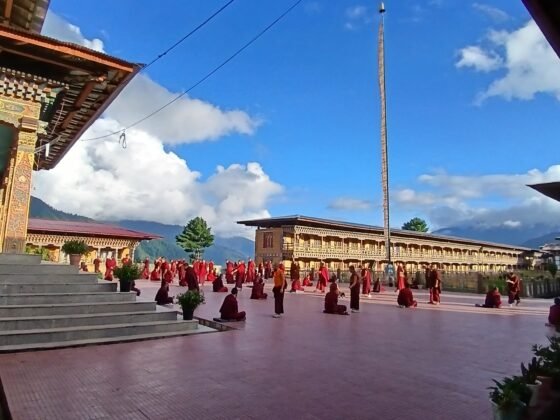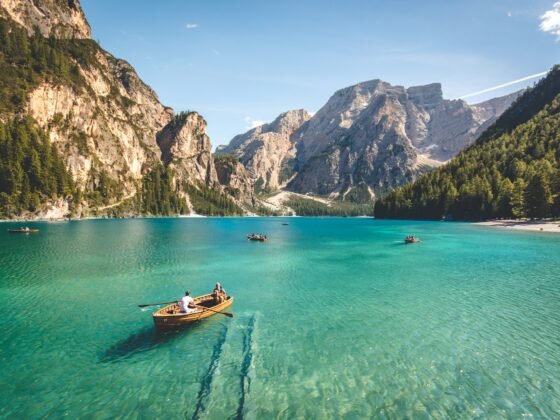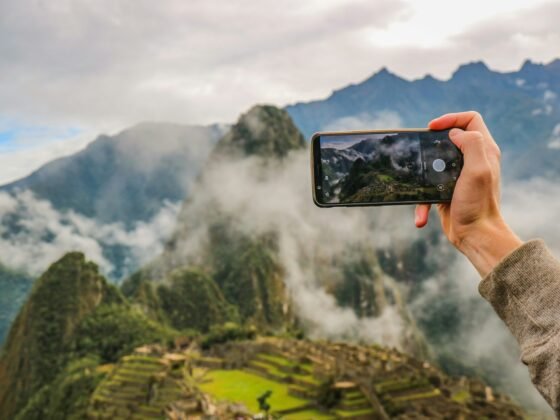Travel Writing on PureTravel: G. Passarelli travels to the south of India and finds more than the beaches..
“Some say this is the end of all India, here where the three seas meet. But there is only one sea, and this is the place where everything begins.”
This is Kanyakumari, India’s southernmost tip, according to a devotee of the illustrious Hindu monk Swami Vivekananda. The anonymous man is committed to taking care of the Swami’s shrine. Not the huge memorial built on a rock in the middle of the sea right ahead, whereas a 130 feet statue stands, but a small altar, carved in black stone back in the 1960s, hidden behind the great Devi temple and disregarded by Kanyakumari’s visitors.
Most people come to this city at the border of Tamil Nadu and Kerala to ask for benefits at the Devi Kumari temple and enjoy the sunset from Mahatma Gandhi’s museum balcony. But the man doesn’t mind. His mission in life is to keep the shrine fresh with water, flowers and gifts every day of the year, come rain or shine. He has been here for the last six years and promised to come back everyday until his strength permits. Someone has to support the altar.
I listen with genuine interest, but leave the shrine after giving some rupees. I came to Kanyakumari to dip my feet in the tri-sea, the sangam where the Indian Ocean, the Oman and Arabic seas collide, the site the Mahatma himself elected for his ashes to be launched in the wind.
Kanyakumari is no more crazy than most parts of India, at least for foreigners. Women coming and going in their elegant saree, men dressed in cotton lungi, lines of uniformed school children following their teachers. People, cow, goat and crow alike congregate in the huge stone boardwalk nearing the sagam.
But there’s a taint of surrealism in experiencing an edge of continent, and I enjoy the thrill of being in the remotest part I had ever been, alone. I may not be the only westerner tourist in town, but I’m sure the only short haired, tattooed, Brazilian female around and, despite wearing a modest combination of skirt, shirt and dupatta (the Indian shawl), I still get stares all the time. I ignore, walking as if very sure of where to go amongst the persistent calling of men selling ice-cream, postal cards, plastic tuk-tuk toys and rice grains with your name written on it.
Centered in the boardwalk, overlooking the sangam, is an immense shelter structure, like a squared bandstand made of the darkest, polished rock. Inside, dozens of women relax in the shadow, sharing water and food while men and kids bathe in the stone beach. Pavement leads to a three-sided terrace facing the three seas, with steps diving into the water, where a man fishes with a nylon line and a young couple look at the horizon, discreetly holding hands. The big, atomic Indian sun scorches us all, but there’s no heat at the sangam. It just dissolves in the unstoppable wind.
At 4PM the Devi temple revives, so I hike to the main door, removing my shoes and walking over hot dust. The Devi Kumari is one of the few feminine deity temples of India, established two thousand years ago or so, depending on who you ask – everything old in India lacks accurate recording. The important thing, anyway, is not when the temple was built, but the fact that it still holds. As with the man taking care of the Swami’s altar, it will continue to exist as long as people care for it. And this being India, there’s no shortage of people.
Near the entrance, a guard notices my backpack and point out that I must leave it onto the pile of possessions at the main door. I leave all my stuff, including passport, cash and sole pair of shoes, before following the walkway inside the temple
Yellow lights and sweet aromas come from oil lamps hanging on black granite walls. As the line snakes within, people stop talking to each other to get concentrated. Some are praying. It’s a ten minute walk, crossing different small halls until nearing the Devi. She’s not as impressive as I imagined, but I’m not sure what I was expecting anyway. She is small, built in blue stone, ornamented with gold, gems, cloths, fruits and flowers. Most visitors carry gifts: money, scented oil or desserts. In the presence of her altar are two monks, receiving the offerings and giving puja, the offering.
Unsure of how to act, I move out of the line to stand alone and observe. The apparently infinite line is moving fast. Some people cry, some offer puja, some stand and say words. I feel bad for not knowing I should bring Devi a present. Maybe that’s why I’m not experiencing any spiritual revelation in the presence of the Goddess? I stay aside, a breathing piece of furniture, worthless among the divine atmosphere. Then, after ten minutes, one of the monks waves his hand, calling me. He paints my forehead with the temple’s paste of curcuma and oil. I appreciate and bow, murmuring “namaskar.” He indicates the doorway.
Next minute I’m out of the temple, back into the permanent noise and heat of Kanyakumari. No spiritual epiphany for this westerner, I guess, finding contempt in localizing my backpack, intact under the mass of clothes, bags and wallets in front of the temple’s door. Next day I’d enter a train, heading north. The end of India was just the beginning.
G. Passarelli












